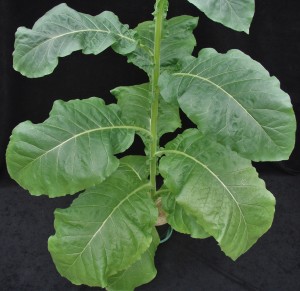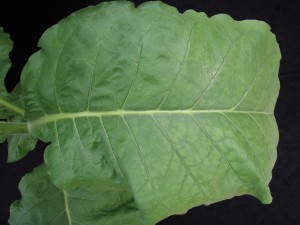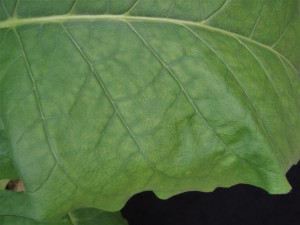From the Field-Agronomy Notes
go.ncsu.edu/readext?425609
en Español / em Português
El inglés es el idioma de control de esta página. En la medida en que haya algún conflicto entre la traducción al inglés y la traducción, el inglés prevalece.
Al hacer clic en el enlace de traducción se activa un servicio de traducción gratuito para convertir la página al español. Al igual que con cualquier traducción por Internet, la conversión no es sensible al contexto y puede que no traduzca el texto en su significado original. NC State Extension no garantiza la exactitud del texto traducido. Por favor, tenga en cuenta que algunas aplicaciones y/o servicios pueden no funcionar como se espera cuando se traducen.
Português
Inglês é o idioma de controle desta página. Na medida que haja algum conflito entre o texto original em Inglês e a tradução, o Inglês prevalece.
Ao clicar no link de tradução, um serviço gratuito de tradução será ativado para converter a página para o Português. Como em qualquer tradução pela internet, a conversão não é sensivel ao contexto e pode não ocorrer a tradução para o significado orginal. O serviço de Extensão da Carolina do Norte (NC State Extension) não garante a exatidão do texto traduzido. Por favor, observe que algumas funções ou serviços podem não funcionar como esperado após a tradução.
English
English is the controlling language of this page. To the extent there is any conflict between the English text and the translation, English controls.
Clicking on the translation link activates a free translation service to convert the page to Spanish. As with any Internet translation, the conversion is not context-sensitive and may not translate the text to its original meaning. NC State Extension does not guarantee the accuracy of the translated text. Please note that some applications and/or services may not function as expected when translated.
Collapse ▲Tobacco Research Update: Magnesium Deficiency of Tobacco
In this tobacco research update, we highlight the symptoms of magnesium deficiency. These images are part of a project supported by the North Carolina Tobacco Foundation to develop a web-based diagnostic key for the identification of nutrient disorders of tobacco.
While deficiencies of the primary macronutrients lead to stunted and symptomatic tobacco quite quickly, plants that are magnesium (Mg) deficient typically grow to be large and healthy. In fact, Mg deficiency symptoms did not begin to appear in the nutrient disorder irrigation system until after several weeks. [In contrast, potassium (K) deficiency developed very quickly on tobacco.]
Tobacco that is deficient in Mg will initially develop symptoms on the lower or older foliage (Fig. 1). These symptoms occur as an interveinal chlorosis that begins on the leaf margin, typically toward the leaf tip (Fig. 2). Symptoms begin on the lower foliage due to the fact that Mg is mobile within plant tissues and is translocated from these older leaves to the young developing tissues during limited Mg conditions.

Figure 1. Symptoms of a marginal interveinal chlorosis begin on the lower leaves in Mg deficient tobacco.
©2016 Forensic Floriculture

Figure 2. A closer view of a symptomatic leaf shows the pattern of chlorosis that begins on the margins, closer to the leaf tip.
©2016 Forensic Floriculture
As the symptoms of Mg deficiency progress, the interveinal chlorosis will spread toward the center of the leaf (Fig. 3). Additionally, as these symptoms worsen on the older leaves, the interveinal chlorosis will advance to the mid and upper foliage.

Figure 3. The pattern of interveinal chlorosis will eventually spread to the center of the leaf, as may be seen here.
©2016 Forensic Floriculture
It is important to note upon observing interveinal chlorosis, that similar symptoms may also be caused by an iron (Fe) deficiency. A pattern of interveinal chlorosis often develops under Fe deficient conditions, but these symptoms first occur on the youngest or upper leaves. The location of the symptoms on the plant can be used to determine whether the plant is deficient in Mg or Fe.
The 360-degree image below shows the symptoms of interveinal chlorosis occurring primarily on the lower and central foliage (Fig. 4).

Figure 4. The 360-degree view of this symptomatic Mg deficient tobacco may be viewed by clicking on the above picture.
©2016 Forensic Floriculture
We would like to express our appreciation to the North Carolina Tobacco Foundation for supporting this project. We will be providing updates as symptoms progress over the course of the nutrient disorder induction phase of the experiment.
Key Contact: Dr. Matthew Vann, Department of Crop and Soil Science mcvann@ncsu.edu
Contributing Authors: Josh Henry, Paul Cockson, Matthew Vann, and Brian Whipker
Funding Source: North Carolina Tobacco Foundation
Project Team: Josh Henry (NC State M.S. student in Horticultural Science), Paul Cockson (NC State B.S. student in Agroecology), Ingram McCall (Research Technician in Horticultural Science), Rhonda Conlon (Extension IT at NC State), Matthew Vann (Tobacco Extension Specialist, Dept. of Crop and Soil Science), and Brian Whipker (Professor of Floriculture and Plant Nutrition in Horticultural Science).


